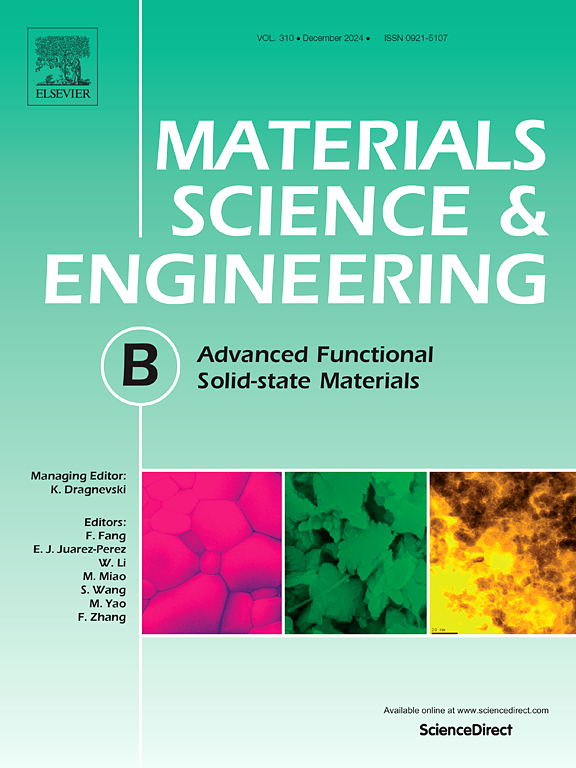碳纳米管和纳米纤维作为未来的基石:结构、合成、性质和功能化的观点
IF 4.6
3区 材料科学
Q2 MATERIALS SCIENCE, MULTIDISCIPLINARY
引用次数: 0
摘要
本文综述了碳纳米管(CNTs)和碳纳米纤维(CNFs)的结构、合成、功能化及其应用。我们涵盖了各种合成技术,包括化学气相沉积,模板,静电纺丝和微波辅助合成。具体来说,我们讨论了这些方法的能力和它们的关键加工参数来控制这些纳米结构的形态(对于碳纳米管来说是直的、螺旋的或分支的结构,对于碳纳米管来说是空心的或固体的结构)以及这些纳米结构的排列和直径。此外,我们还解释了每种技术的原理、优点和局限性。我们还回顾了表面功能化策略,如酸处理、聚合、掺杂和金属纳米颗粒修饰,并强调了表面功能化在提高碳纳米管和CNFs的机械、电学和催化性能方面的作用。然后,我们强调了其合成和功能化的关键挑战,例如实现均匀性,可扩展性和精确的结构控制,以促进碳纳米管和CNF的应用,特别是在能源存储和生产,环境修复,生物医学系统和生物传感器方面。它们的高机械强度,导电性和大表面积支持它们在各个行业的集成。总的来说,这篇综述概述了未来的机遇,并解决了推进碳纳米管和CNF发展的主要挑战。本文章由计算机程序翻译,如有差异,请以英文原文为准。
Carbon nanotubes and nanofibers as building blocks for the future: Structure, synthesis, properties, and functionalization perspectives
In this review, we discuss the structure, synthesis, functionalization, and applications of carbon nanotubes (CNTs) and carbon nanofibers (CNFs). We cover a variety of synthesis techniques, including chemical vapor deposition, templating, electrospinning, and microwave-assisted synthesis. Specifically, we discuss the capacity of these methods and their critical processing parameters to control the morphology (straight, helical, or branched structures for CNTs, and hollow or solid architectures for CNFs) and the alignment and diameter of these nanostructures. In addition, we explain the principles, advantages, and limitations of each technique. We also review surface functionalization strategies, such as acid treatment, polymerization, doping and metal nanoparticle decoration, and stress the role of surface functionalization in enhancing the mechanical, electrical, and catalytic properties of CNTs and CNFs. We then highlight key challenges in their synthesis and functionalization, such as achieving uniformity, scalability, and precise structural control, to promote CNT and CNF applications, particularly in energy storage and production, environmental remediation, biomedical systems, and biosensors. Their high mechanical strength, electrical conductivity, and large surface area support their integration across various industries. Overall, this review outlines future opportunities and addresses the main challenges in advancing CNT and CNF development for real-world applications.
求助全文
通过发布文献求助,成功后即可免费获取论文全文。
去求助
来源期刊

Materials Science and Engineering: B
工程技术-材料科学:综合
CiteScore
5.60
自引率
2.80%
发文量
481
审稿时长
3.5 months
期刊介绍:
The journal provides an international medium for the publication of theoretical and experimental studies and reviews related to the electronic, electrochemical, ionic, magnetic, optical, and biosensing properties of solid state materials in bulk, thin film and particulate forms. Papers dealing with synthesis, processing, characterization, structure, physical properties and computational aspects of nano-crystalline, crystalline, amorphous and glassy forms of ceramics, semiconductors, layered insertion compounds, low-dimensional compounds and systems, fast-ion conductors, polymers and dielectrics are viewed as suitable for publication. Articles focused on nano-structured aspects of these advanced solid-state materials will also be considered suitable.
 求助内容:
求助内容: 应助结果提醒方式:
应助结果提醒方式:


